Anton Kolonin
Novosibirsk State University
Evolution of Efficient Symbolic Communication Codes
Jun 11, 2023



Abstract:The paper explores how the human natural language structure can be seen as a product of evolution of inter-personal communication code, targeting maximisation of such culture-agnostic and cross-lingual metrics such as anti-entropy, compression factor and cross-split F1 score. The exploration is done as part of a larger unsupervised language learning effort, the attempt is made to perform meta-learning in a space of hyper-parameters maximising F1 score based on the "ground truth" language structure, by means of maximising the metrics mentioned above. The paper presents preliminary results of cross-lingual word-level segmentation tokenisation study for Russian, Chinese and English as well as subword segmentation or morphological parsing study for English. It is found that language structure form the word-level segmentation or tokenisation can be found as driven by all of these metrics, anti-entropy being more relevant to English and Russian while compression factor more specific for Chinese. The study for subword segmentation or morphological parsing on English lexicon has revealed straight connection between the compression been found to be associated with compression factor, while, surprising, the same connection with anti-entropy has turned to be the inverse.
Self-tuning hyper-parameters for unsupervised cross-lingual tokenization
Mar 04, 2023



Abstract:We explore the possibility of meta-learning for the language-independent unsupervised tokenization problem for English, Russian, and Chinese. We implement the meta-learning approach for automatic determination of hyper-parameters of the unsupervised tokenization model proposed in earlier works, relying on various human-independent fitness functions such as normalised anti-entropy, compression factor and cross-split F 1 score, as well as additive and multiplicative composite combinations of the three metrics, testing them against the conventional F1 tokenization score. We find a fairly good correlation between the latter and the additive combination of the former three metrics for English and Russian. In case of Chinese, we find a significant correlation between the F 1 score and the compression factor. Our results suggest the possibility of robust unsupervised tokenization of low-resource and dead languages and allow us to think about human languages in terms of the evolution of efficient symbolic communication codes with different structural optimisation schemes that have evolved in different human cultures.
Cognitive Architecture for Decision-Making Based on Brain Principles Programming (in Russian)
Feb 18, 2023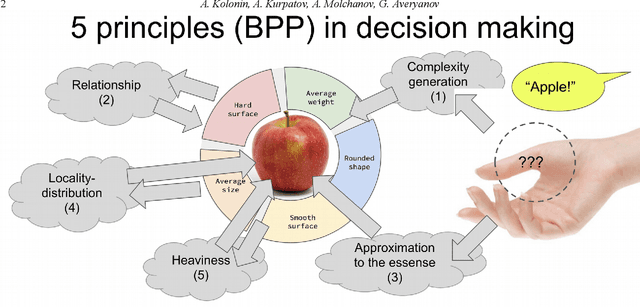
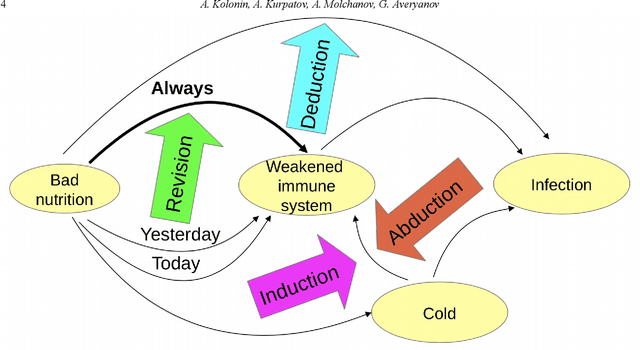
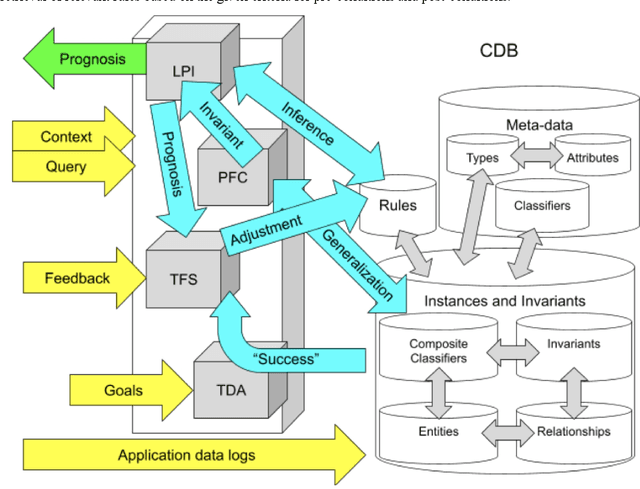
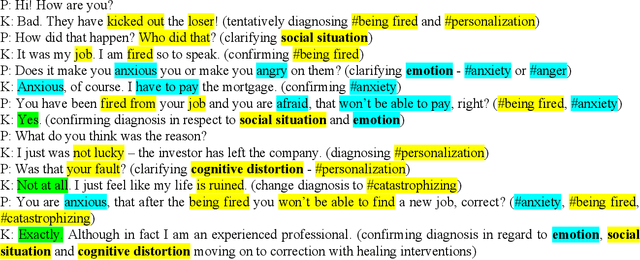
Abstract:We describe a cognitive architecture intended to solve a wide range of problems based on the five identified principles of brain activity, with their implementation in three subsystems: logical-probabilistic inference, probabilistic formal concepts, and functional systems theory. Building an architecture involves the implementation of a task-driven approach that allows defining the target functions of applied applications as tasks formulated in terms of the operating environment corresponding to the task, expressed in the applied ontology. We provide a basic ontology for a number of practical applications as well as for the subject domain ontologies based upon it, describe the proposed architecture, and give possible examples of the execution of these applications in this architecture.
* 13 pages, 5 figures, Russian language, original English version of the paper is presented on BICA-2023 - 2023 Annual International Conference on Brain-Inspired Cognitive Architectures for Artificial Intelligence, the 14th Annual Meeting of the BICA Society
Application of Liquid Rank Reputation System for Content Recommendation
Sep 15, 2022



Abstract:An effective content recommendation on social media platforms should be able to benefit both creators to earn fair compensation and consumers to enjoy really relevant, interesting, and personalized content. In this paper, we propose a model to implement the liquid democracy principle for the content recommendation system. It uses a personalized recommendation model based on reputation ranking system to encourage personal interests driven recommendation. Moreover, the personalization factors to an end users' higher-order friends on the social network (initial input Twitter channels in our case study) to improve the accuracy and diversity of recommendation results. This paper analyzes the dataset based on cryptocurrency news on Twitter to find the opinion leader using the liquid rank reputation system. This paper deals with the tier-2 implementation of a liquid rank in a content recommendation model. This model can be also used as an additional layer in the other recommendation systems. The paper proposes the implementation, challenges, and future scope of the liquid rank reputation model.
Unsupervised Tokenization Learning
May 23, 2022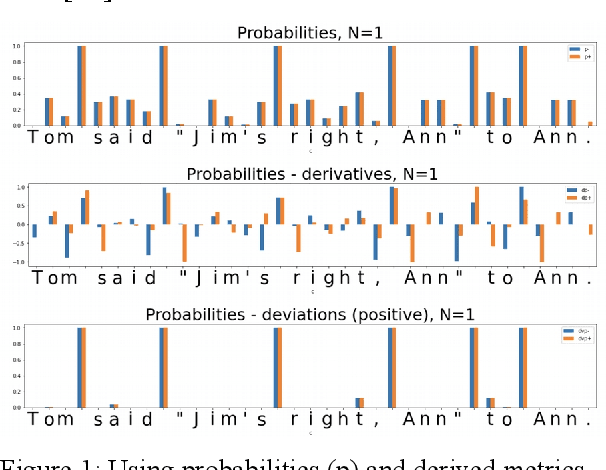
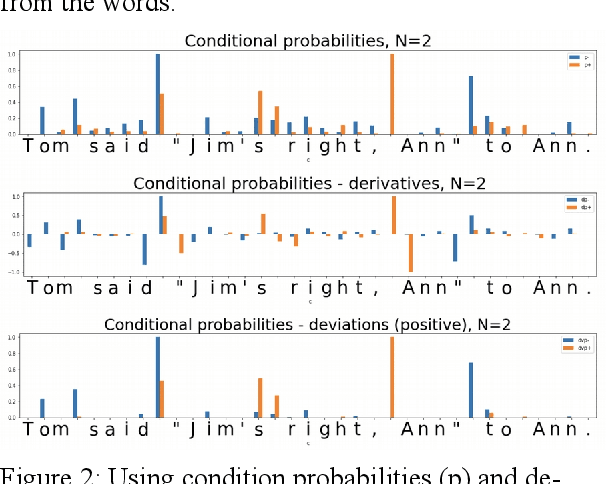
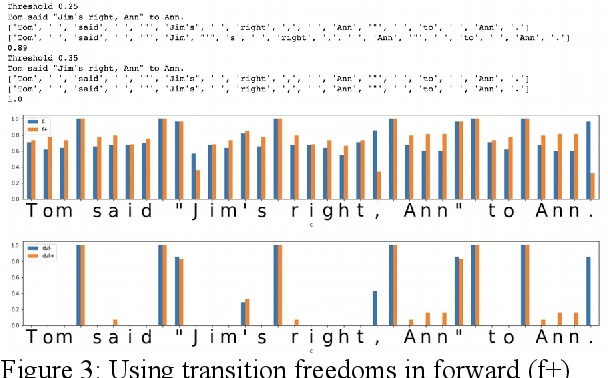
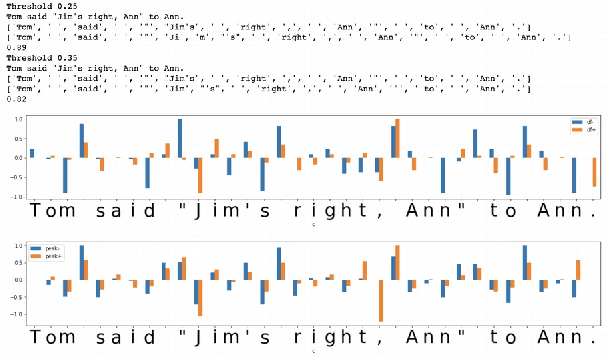
Abstract:In the presented study, we discover that so called "transition freedom" metric appears superior for unsupervised tokenization purposes, compared to statistical metrics such as mutual information and conditional probability, providing F-measure scores in range from 0.71 to 1.0 across explored corpora. We find that different languages require different derivatives of that metric (such as variance and "peak values") for successful tokenization. Larger training corpora does not necessarily effect in better tokenization quality, while compacting the models eliminating statistically weak evidence tends to improve performance. Proposed unsupervised tokenization technique provides quality better or comparable to lexicon-based one, depending on the language.
Causal Analysis of Generic Time Series Data Applied for Market Prediction
Apr 22, 2022
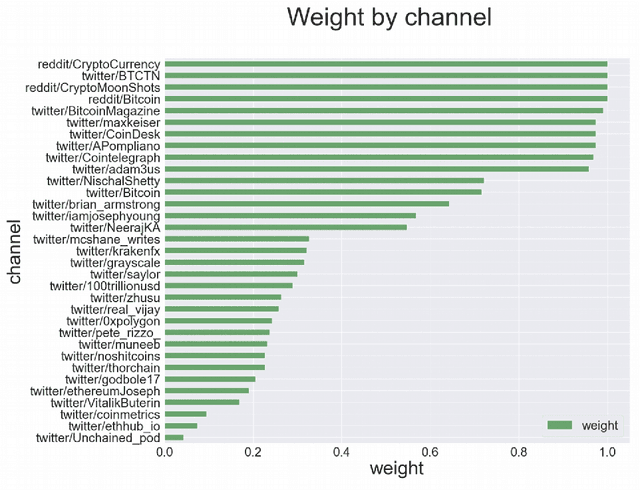
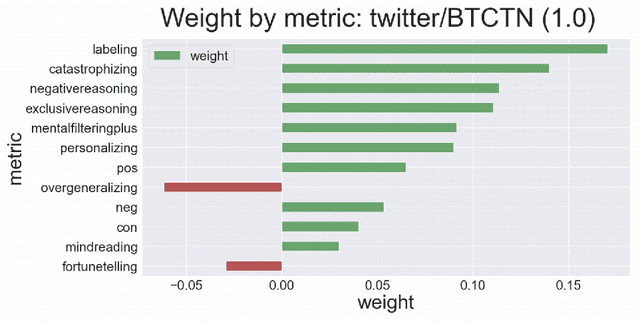

Abstract:We explore the applicability of the causal analysis based on temporally shifted (lagged) Pearson correlation applied to diverse time series of different natures in context of the problem of financial market prediction. Theoretical discussion is followed by description of the practical approach for specific environment of time series data with diverse nature and sparsity, as applied for environments of financial markets. The data involves various financial metrics computable from raw market data such as real-time trades and snapshots of the limit order book as well as metrics determined upon social media news streams such as sentiment and different cognitive distortions. The approach is backed up with presentation of algorithmic framework for data acquisition and analysis, concluded with experimental results, and summary pointing out at the possibility to discriminate causal connections between different sorts of real field market data with further discussion on present issues and possible directions of the following work.
Social Media Sentiment Analysis for Cryptocurrency Market Prediction
Apr 19, 2022


Abstract:In this paper, we explore the usability of different natural language processing models for the sentiment analysis of social media applied to financial market prediction, using the cryptocurrency domain as a reference. We study how the different sentiment metrics are correlated with the price movements of Bitcoin. For this purpose, we explore different methods to calculate the sentiment metrics from a text finding most of them not very accurate for this prediction task. We find that one of the models outperforms more than 20 other public ones and makes it possible to fine-tune it efficiently given its interpretable nature. Thus we confirm that interpretable artificial intelligence and natural language processing methods might be more valuable practically than non-explainable and non-interpretable ones. In the end, we analyse potential causal connections between the different sentiment metrics and the price movements.
Cognitive Architecture for Decision-Making Based on Brain Principles Programming
Apr 17, 2022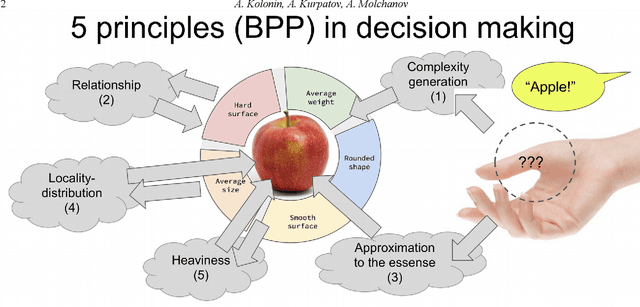
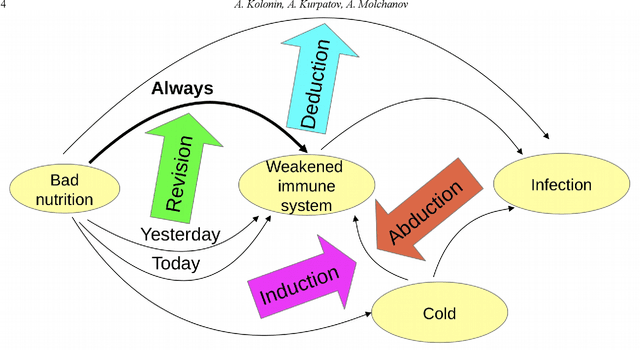
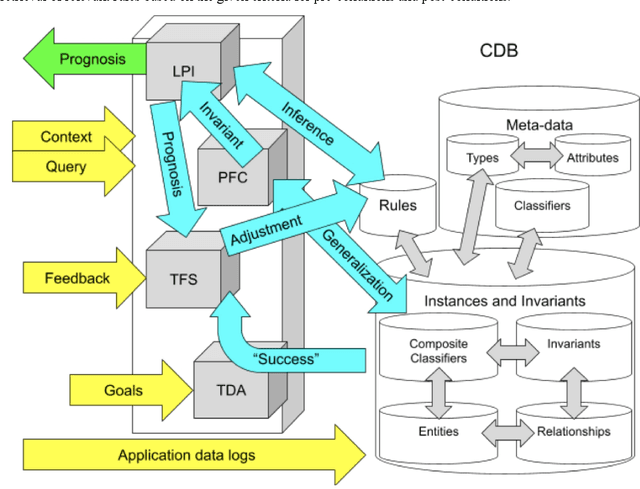
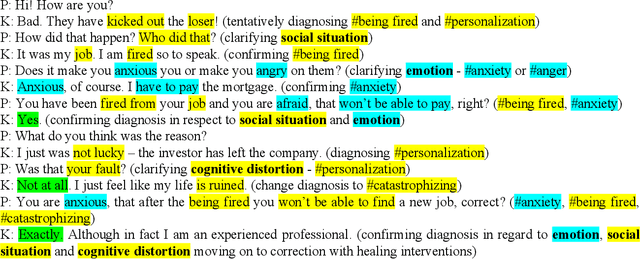
Abstract:We describe a cognitive architecture intended to solve a wide range of problems based on the five identified principles of brain activity, with their implementation in three subsystems: logical-probabilistic inference, probabilistic formal concepts, and functional systems theory. Building an architecture involves the implementation of a task-driven approach that allows defining the target functions of applied applications as tasks formulated in terms of the operating environment corresponding to the task, expressed in the applied ontology. We provide a basic ontology for a number of practical applications as well as for the subject domain ontologies based upon it, describe the proposed architecture, and give possible examples of the execution of these applications in this architecture.
Brain Principles Programming
Mar 14, 2022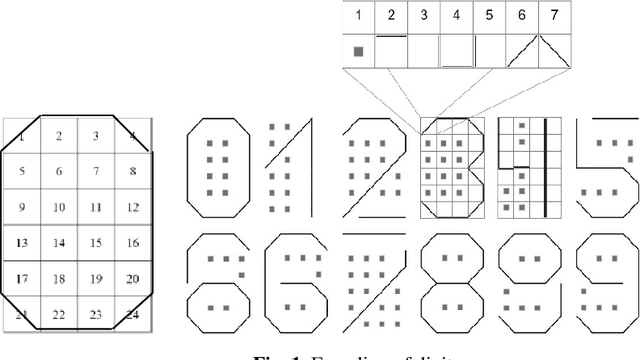
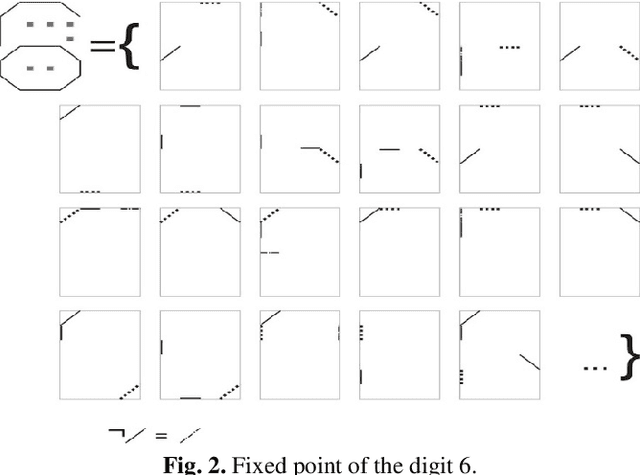
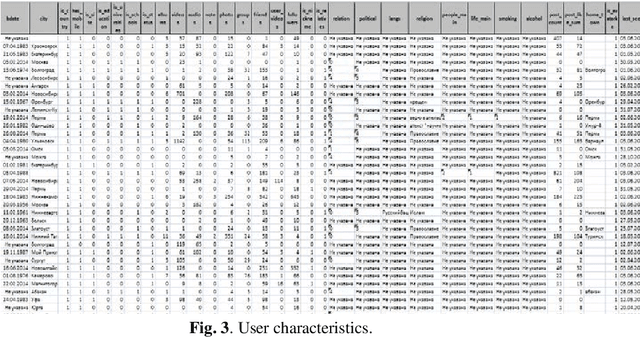
Abstract:In the monograph, STRONG ARTIFICIAL INTELLIGENCE. On the Approaches to Superintelligence, published by Sberbank, provides a cross-disciplinary review of general artificial intelligence. As an anthropomorphic direction of research, it considers Brain Principles Programming, BPP) the formalization of universal mechanisms (principles) of the brain's work with information, which are implemented at all levels of the organization of nervous tissue. This monograph provides a formalization of these principles in terms of the category theory. However, this formalization is not enough to develop algorithms for working with information. In this paper, for the description and modeling of Brain Principles Programming, it is proposed to apply mathematical models and algorithms developed by us earlier that model cognitive functions, which are based on well-known physiological, psychological and other natural science theories. The paper uses mathematical models and algorithms of the following theories: P.K.Anokhin's Theory of Functional Brain Systems, Eleonor Rosh's prototypical categorization theory, Bob Rehter's theory of causal models and natural classification. As a result, the formalization of the BPP is obtained and computer examples are given that demonstrate the algorithm's operation.
High-performance automatic categorization and attribution of inventory catalogs
Feb 09, 2022Abstract:Techniques of machine learning for automatic text categorization are applied and adapted for the problem of inventory catalog data attribution, with different approaches explored and optimal solution addressing the tradeoff between accuracy and performance is selected.
 Add to Chrome
Add to Chrome Add to Firefox
Add to Firefox Add to Edge
Add to Edge